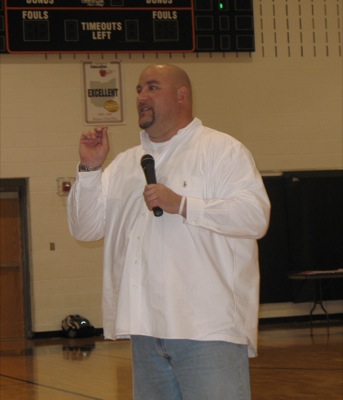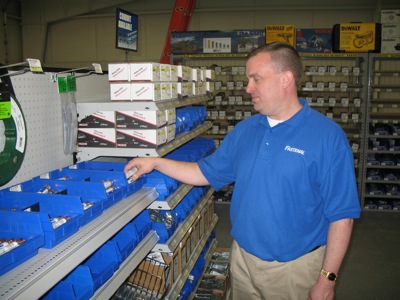Wednesday, March 21st, 2007
LIA wants master plan before lowering lake
By Nancy Allen
The nonprofit Lake Improvement Association (LIA) would consider agreeing to lowering the level of Grand Lake only if it were part of a master plan aimed at improving the lake.
Jeff Vossler updated members of the LIA's Lake Restoration Committee Monday night about a meeting he attended last week with homeowners in the Northwood subdivision along state Route 703. Residents of the lakeshore community want the state to lower the lake's water level in the fall and winter months to lessen flooding. The area has flooded for years and more so in the last several months due to excessive rains.
"We told the group that lowering the lake would have to be part of a many-faceted master plan," Vossler said. "We need to come up with an overall plan that works on all the pieces."
Vossler also said he told Northwood residents of an unsuccessful proposal the LIA and private Lake Development Corp. made to the state last year asking for $3 million a year for 10 years to restore the lake and for an Ohio Department of Natural Resources (ODNR) planner to be assigned to help coordinate the effort.
The funds would pay for riprap along the lake's shoreline and around islands to lessen shoreline erosion, wetlands construction around lake tributaries to filter out sediment and attached nutrients that run off mostly from farmland, lake dredging and other management practices aimed at improving water quality.
Ohio EPA water quality testing shows that the Grand Lake watershed is one of the most degraded in the state.
The LIA in recent weeks sent a packet of information on the lake's water quality problems and another request for the funding to newly-elected Gov. Ted Strickland. The packet also was sent to several new ODNR officials and state and federal legislators who came into leadership after last November's elections. No reply has been received, Vossler said.
There are things that everyone can do to improve water quality in the Grand Lake watershed, a local extension official told LRC members.
Auglaize County OSU Extension Agent John Smith gave a PowerPoint presentation showing ways to do it.
He held up a set of inflatable tile plugs that can be used by farmers when spreading manure to help keep nutrients in soil and out of streams. The tile plugs are available to use for free at the St. Marys and Wapakoneta fire departments. He also brought a stop box, a metal structure that can be fitted to existing tile outlets that can be closed off before spreading manure.
He also showed pictures of silt fencing around lakeside construction sites, a grass waterway under construction in an erosion prone area in a farm field and other conservation practices. He also showed pictures of bad conservation practices such as manure spread heavily on snow-covered ground and the resulting manure-laden runoff after the snow melted.

